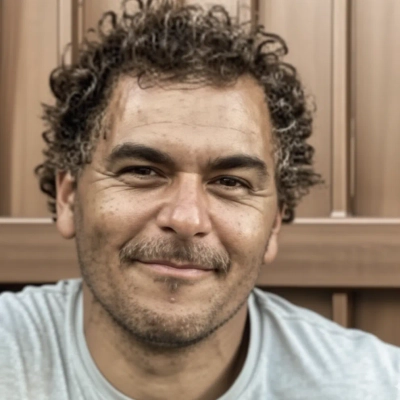6 Alternative Therapeutic Approaches for Clients Who Don't Respond to Traditional Methods
This article explores six unconventional therapeutic strategies for practitioners working with clients who have reached an impasse with traditional methods. Drawing on expert insights from the mental health field, these approaches range from schema-focused work to culturally-adapted interventions and body-mind integration techniques. Therapists can discover practical alternatives that transform apparent treatment plateaus into opportunities for deeper healing and breakthrough progress.
Persevere Through Periods of Apparent Stagnation
When clients don't respond to traditional therapeutic methods, I find value in persevering with treatment rather than terminating prematurely. I've learned that my personal feelings of being stuck with a client should not override the therapeutic process, especially when the client is working through important transference issues. Continuing therapy in these moments often allows breakthroughs that wouldn't occur if we had given up at the first sign of resistance. This patient, adaptive approach has repeatedly shown that therapeutic progress often requires working through periods of apparent stagnation rather than quickly shifting to alternative methods.

Address Maladaptive Schemas Beyond Symptom Management
When clients don't respond to standard therapeutic approaches, this often points to a deeper mismatch between the intervention and the client's psychological structure, coping style, or readiness for change. This isn't a dead end but a signal to re-evaluate the underlying mechanisms at play. One alternative approach that has shown notable success in these situations is schema-focused work. This involves identifying and directly addressing maladaptive schemas which are those deep, enduring belief systems formed early in life allowing therapy to move beyond surface-level symptom management. Clients who don't respond to techniques like CBT or solution-focused interventions often make more meaningful progress when the therapy addresses the emotional roots of their patterns rather than just the behavioral expressions. Psychodynamic or attachment-informed approaches can also be highly effective with resistant cases. Instead of confronting resistance head-on, these models examine its function, specifically what emotional experience or fear the resistance is protecting. By exploring that protective layer with patience and depth, therapy can uncover previously inaccessible material, leading to lasting change. When therapy is flexible, integrative, and attuned to underlying psychological structures, resistance becomes less of a barrier and more of a guide. Breakthroughs often happen not through pushing harder with familiar tools but by shifting to approaches that meet the client at the level where the real work needs to happen.

Reframe Plateaus as Valuable Diagnostic Information
When clients don't respond to traditional methods, one of the most effective starting point is to reframe the lack of progress as valuable diagnostic information rather than failure. A plateau can signal that the approach isn't aligned with how the client experiences and expresses emotion, processes trauma, or engages with change which can help the therapy shift from a standardized model to a more tailored, responsive process. One alternative approach that has shown strong impact in resistant cases is narrative therapy. This involves inviting clients to externalize their problems and re-author their own stories which often reduces shame and defensiveness, creating space for new perspectives. This approach can help clients who feel stuck in patterns or identities shaped by long-standing emotional pain. Regardless of the strategy, successful outcomes often depend on meeting clients with flexibility, curiosity, and respect for their unique way of healing.

Adapt Therapy to Cultural Values
For clients who haven't responded to traditional therapeutic methods, I find that cultural adaptability often provides a pathway forward. Working with a Vietnamese couple taught me that standard Western approaches to therapy can sometimes conflict with cultural values around privacy and family honor. By adjusting my therapeutic framework to align with clients' cultural contexts rather than imposing standardized methods, I've seen remarkable breakthroughs in cases that previously seemed resistant to treatment.

Connect Body and Mind Through Integrative Approaches
When people come to me feeling like "nothing has worked," I see it as an invitation to shift from talking about their experiences to helping their bodies reprocess those experiences. Traditional talk therapy is powerful, but for many trauma survivors or deeply stressed individuals, words alone don't reach the parts of the nervous system where pain and protection are stored.
At Peace of Mind Wellness Center, we take an integrative approach that combines somatic therapy, EMDR Intensives, Internal Family Systems (IFS), the Safe and Sound Protocol (SSP), and body-based practices like sound bowls and somatic movement. These modalities help clients connect to safety, sensation, and self-compassion, often in ways that feel transformative when other methods haven't.
Safe and Sound Protocol (SSP) is a listening-based intervention that uses specially filtered music to calm the autonomic nervous system. It gently cues the body toward a sense of safety and connection, supporting emotional regulation and trauma processing. For many clients, especially those with anxiety, chronic stress, or trauma, it can open the door to deeper therapy work after years of feeling "stuck."
At Peace of Mind, we tailor SSP to each individual, sometimes integrating it before EMDR or IFS work, or pairing it with grounding and breathwork practices. Clients often describe it as the first time their body feels like it can finally exhale.
Our EMDR and IFS Intensives allow clients to go beyond the weekly session format and enter a deep, focused healing process over one to three days. These intensives include long-form reprocessing sessions, nervous system regulation practices, yoga or meditation, and integration work.
By combining EMDR's evidence-based trauma reprocessing with IFS's compassionate internal dialogue, clients can move through layers of pain, defense, and resilience more efficiently, sometimes achieving more in a few days than in months of traditional therapy.
We often incorporate sound bowls, gentle yoga, and somatic movement to help clients regulate between and during sessions. Vibrational sound engages the vagus nerve and supports deep parasympathetic relaxation, while movement restores a sense of agency and presence in the body.
When clients begin to notice their breath, posture, or heartbeat shift in real time, they start to trust their body as an ally instead of an adversary. That's where true healing takes root, when mind and body are working together.

Bypass Neural Networks With Physical Interventions
"Stuck clients" are some of my favorite people to work with because their brains are often wired for survival, not thriving. When standard talk therapy falls flat, I get curious about what's actually locking up those neural networks—amygdala overdrive, hyperactive insula, etc. Your brain stacks defensive wiring in ways that can outsmart logic and even willpower, especially for those who've faced relentless stress or rejection. Sometimes, I'll use brief, physically anchored interventions like bilateral movement or breathwork that targets the vagus nerve, because you can't outthink a system that's fueled by your deeper evolutionary wiring.
One executive had zero progress with years of insight therapy, but when we did simple pattern interruption—literally making new associations between physical cues and safe, productive responses—he broke the gridlock in days instead of months. We know from anthropology that repetition builds rituals, and from psychology and socialogy that new group norms can radically speed up rewiring. At times, I'll coach someone through a social "experiment" in real time so their brain links positive risk to dopamine release versus threat.
Biggest surprise? The quickest breakthroughs often come from small, quirky changes that bypass the conscious mind. When the brain can see, feel, and try something new, it starts rewiring itself whether you believe in it or not.


